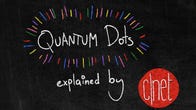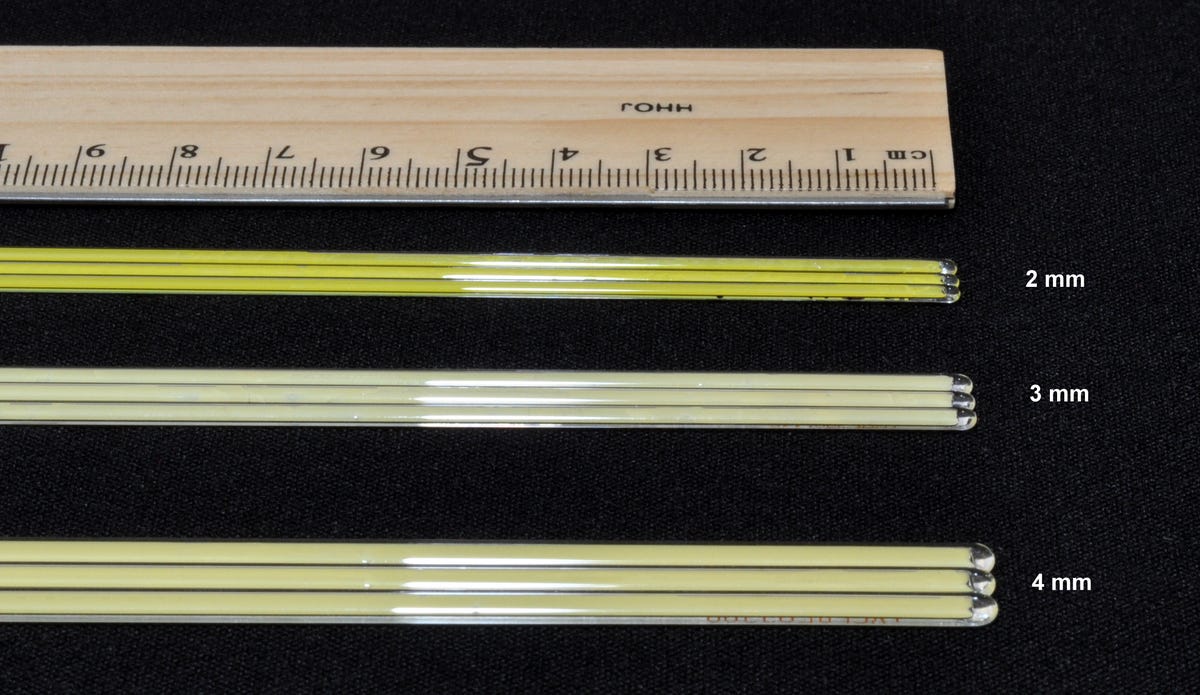
QD Vision
Quantum dots. I don’t think there’s been a cooler name for a TV technology ever. What they can do and how they work is even cooler.
The claim, by nearly every TV manufacturer at CES this year, is for better, more lifelike color. Some also talk up improved efficiency — better brightness for the same power — which leads to improved contrast.
Each company is doing quantum dots a little differently, but the results should be similar. More lifelike color is possible.
Here’s how they work, and what they can do.


Now playing:
Watch this:
What is quantum dot?
2:46
Two years ago I wrote What are Quantum Dots, and how could they help your next TV?. At the time, there was only a single quantum dot display, the Sony W900A (2014’s X900B did not have QD).
Some things have changed, some have stayed the same. So there will be a little overlap here with that article, but mostly this is all new info based on the multiple upcoming models with QD.
What the what?
Quantum dots are microscopic nanocrystals that glow a specific wavelength (i.e. color) when given energy. The exact color produced by the QD depends on its size: larger for longer wavelengths (redder colors), smaller for shorter wavelengths (bluer). That’s a bit of an oversimplification, but that’s the basic idea.
Specific wavelengths of color is what we need to great an image on a television. Using the three primary colors of red, green, and blue, we can mix a full rainbow of teals, oranges, yellows, and more.
Plasma and CRT televisions used phosphors to create red, green, and blue. All LCDs use color filters to do the same.
There are multiple ways to use QDs in a display.
Method 1: Tubes
When we talked about QDs last time, this was the method used, and still is in several cases (not Samsung or LG, but most of the others).
The TV is edge-lit with blue LEDs. In front of the LEDs is a tube of red and green quantum dots. The blue LEDs create blue light, and the energy for the QDs to create green and red light.
Here’s what the tubes look like:


QD Vision
Here’s a diagram brazenly stolen from the previous article:


QD Vision
The main benefit to this method, according to its proponents, is lower cost. You only need enough QDs to fill some small tubes. With most edge-lit TVs, there are just two of these on either side.


QD Vision
Method 2: Sheets
The other method is to use a layer of QDs as an additional layer in the LCD sandwich. This method still uses blue LEDs, but uses a lot more QDs as they have to cover the entire screen area.
Here’s a rough idea of what’s happening:


Geoffrey Morrison
The blue light from the blue LEDs on the edges of the screen (presuming an edge-lit model, full-array in sets like the Samsung JS9500 works too) reflect off the light guide (the spheres in this illustration). This passes through a QD layer, energizing them, and sending RGB light through the rest of the LCD, including the liquid crystal layer that blocks that light to create an image.
LG and Samsung seem to be using this method, but neither would comment on specifics (including why they prefer this method).
Method 3: The future
There are other ways to use QD as well. Potentially you could have a direct-view QD display, with red, green and blue QDs getting energy directly (electroluminescence). The blue, like with OLED, is the trouble spot there, which is why all current versions of QD still use blue LEDs.
Will we see direct-view QD displays someday? Maybe.
Beyond the marketing
Is there anything to the notion that using pure colors, either QD or RGB LEDs, results in a more realistic image? Anecdotally, I’d say yes. In own testing I’ve always found that displays with separate red, green, and blue colors (be it RGB LED or QD), just had something more vibrant and real with their image. This is after calibration to Rec 709 (the HD standard). So as far as measurements were concerned, they had the same colors as any other TV. Those colors just looked better. Since this was across multiple brands and technologies, it wasn’t just a fluke.
In CNET’s review of that Sony W900A , reviewers Ty Pendlebury and David Katzmaier noticed improved color as well.
The guys at QD Vision, when I asked them about this “phenomenon,” said I should check out the Helmholtz-Kohlrausch effect. Basically, it’s about how the human eye perceives lights of pure color as brighter than white of the same objective brightness. The purer the color, the brighter it seems. It’s pretty interesting, and far beyond the scope of this article, but it certainly shows that the move towards pure RGB (over “white” LED) has some merit.
You can also check out “Lightness–The Helmholtz-Kohlrausch Effect” (pdf, or the whole issue here, article starts on page 20) from Protocol magazine.
Bottom line
Like HDR, we’re excited about quantum dots as a new technology in TVs this year. Beyond marketing hype, QD’s promises of better color seem completely possible. True, there’s a risk that manufacturers will jack up the color to unrealistic levels, but thankfully, almost all let you dial that back in the user settings to something more realistic.
But accurate, more lifelike color? Sign us up.
Got a question for Geoff? First, check out all the other articles he’s written on topics like why all HDMI cables are the same, LED LCD vs. OLED, why 4K TVs aren’t worth it, and more. Still have a question?Send him an e-mail! He won’t tell you what TV to buy, but he might use your letter in a future article. You can also send him a message on Twitter @TechWriterGeoff or Google+.




